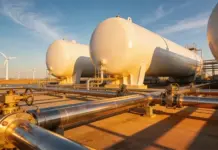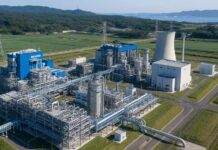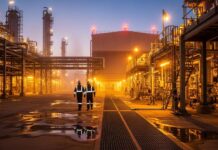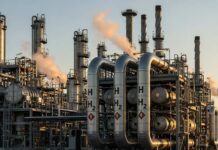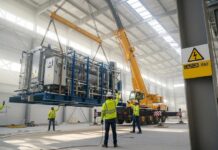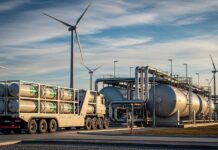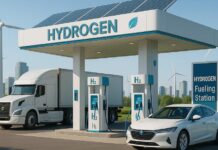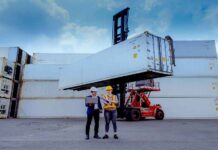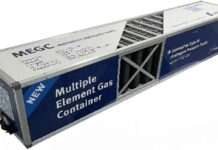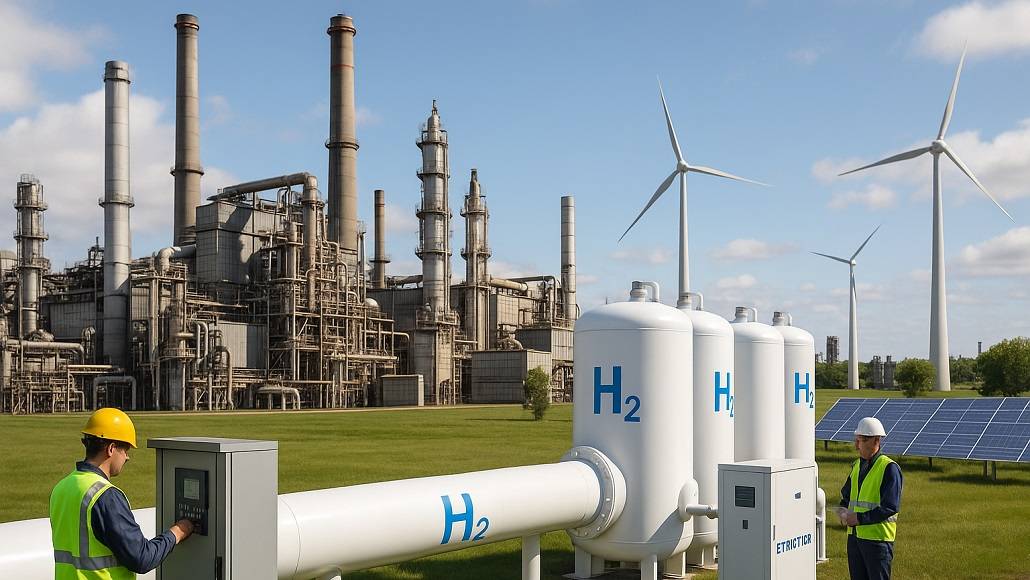With the competition to achieve net-zero emissions, attention is rapidly turning to the challenge of decarbonising heavy industry—a sector responsible for nearly a quarter of global greenhouse gas emissions. Steel, chemicals, cement, and refining are important drivers of economic progress but have long been among the most difficult sectors to decarbonise due to their reliance on high-temperature processing and fossil fuel feedstocks. To that end, the application of hydrogen to decarbonise industrial clusters is rapidly emerging as a key strategy, with technological breadth as well as potential for deep-scale emission mitigation.
Hydrogen: The Clean Molecule for Industry
Hydrogen’s unique properties make it a potential leader for deep decarbonisation. Electricity, as a medium, cannot be utilised to displace fossil fuels in all industrial applications, but hydrogen can be both a clean-burning fuel and a zero-carbon feedstock. Hydrogen’s use to decarbonise industrial complexes reveals itself most obviously where direct electrification is impractical or prohibitively expensive, such as in blast furnaces to produce steel, high-temperature kilns, or uses where reducing agents are required.
When hydrogen is generated from renewable electricity, it is referred to as “green hydrogen” because it has zero greenhouse gas emissions throughout its lifecycle and helps create truly climate-neutral industry. According to global energy agencies like IRENA and IEA, hydrogen could meet up to 13% of global final energy demand by 2050 in scenarios aligned with Paris Agreement goals, with industry and transport sectors driving the majority of demand.
Industrial Clusters: Why They Matter
Industrial clusters are geographically defined groups of regions of manufacturing, refining, and heavy industry that are concentrated strategically and are well-adapted to early, large-scale implementation of hydrogen. Such clusters comprise those along the European Antwerp-Rotterdam-Rhine axis, the U.S. Gulf of Mexico, and East Asia’s industrial centres that share overlapping infrastructure, proximity of would-be producers and consumers, and pre-existing logistical webs.
Building on the location of hydrogen in industrial clusters’ decarbonisation, it enables economies of scale in hydrogen production, transportation, and storage. Multiple users are serviced by shared pipelines, centralised electrolysers, and shared CCS facilities, greatly lowering the unit costs of clean hydrogen. The combined power of clusters also appeals to investors and policymakers, focusing decarbonisation where it can do the most good.
How Hydrogen Revolutionises Industrial Processes
Hydrogen’s versatility is at the heart of its ability to decarbonise industrial clusters. In steelmaking, hydrogen can now convert iron ore directly instead of coal, using water vapour as a byproduct rather than carbon dioxide. Trailblazing pilot projects, such as Sweden’s HYBRIT, have already demonstrated fossil-free steel at scale—a challenge now matched by German, UK, and Indian factories.
In the chemical industry, the role of hydrogen in decarbonising industrial hubs goes all the way to the production of ammonia and methanol, both of which traditionally depend on grey hydrogen made from natural gas. The transition to green hydrogen not only reduces emissions but also positions companies to deliver clean feedstocks and fuels to international markets.
Refineries, one of the pillars of industrial clusters, consume large quantities of hydrogen for hydrocracking and desulfurization. Substitution of traditional hydrogen with low-carbon hydrogen has the potential to decrease the emissions footprint of refineries, making them future clean fuel hubs.
Scaling Up: Infrastructure, Investment, and Policy
Efficiently applying hydrogen to decarbonise industrial clusters relies on a series of enablers. Infrastructure is the first: ramping up electrolyser production, building hydrogen delivery pipelines, and developing high-capacity storage systems—all to assure secure, affordable supply. Joint CCS infrastructure may also be necessary, at least in the short term, as most clusters will be blending blue (CCS-based with natural gas) and green hydrogen to build up supply.
Financing these investments requires courage and determination. Governments worldwide are increasingly turning their eyes to the potential of hydrogen in industrial cluster decarbonisation, taking the form of ambitious policy packages such as the European Union’s “Hydrogen Strategy for a Climate-Neutral Europe,” the U.S. Department of Energy’s Hydrogen Hubs Program, and gigascale public-private collaborations in Asia and Australia. These kinds of frameworks both invest and provide regulatory clarity, which enables the development of multi-billion-dollar hydrogen value chains.
Economic and Environmental Impacts
The economic advantage of industrial clusters utilising hydrogen goes beyond emissions savings or compliance. As the cost of green hydrogen continues to drop—possibly to $1-2 per kilogram in the 2030s, according to the International Renewable Energy Agency (IRENA)—early adopters in industries can achieve cost leadership and access leadership. Clean product certification and border carbon charges will also work in favour of low-carbon makers, adding muscle to the business case.
Environmentally, hydrogen’s role in industrial cluster decarbonisation is important. A single steel plant can emit over 10 million tonnes of COâ‚‚ per annum; a few large industrial facilities going green in hydrogen suffice to reduce country emissions by a lot. Moreover, when clusters are decarbonised collectively, they are blueprints and catalysts for regional and worldwide emulation.
Challenges and Future Prospects
Despite the promise, however, deployment at the scale of the role of hydrogen in industrial cluster decarbonisation is not trouble-free. High up-front capital costs, supply-and-demand chicken-and-egg problems, regulatory complexity, and technology barriers on handling and storing hydrogen remain large obstacles. Nevertheless, technology and policy development are picking up speed, with more than 30 large-scale cluster projects announced or in the works globally as of 2024.
In the future, the role of hydrogen in decarbonising industrial clusters will likely become central to national and corporate decarbonisation strategies as a result of the convergence of declining renewable energy costs, mature electrolyser technology, and firm policy support. The development of international hydrogen trade, standardisation of guarantees of origin, and ongoing innovation in end-use applications will only add to this momentum.
Conclusion
The role of hydrogen in decarbonising industrial clusters is transitioning from pilot scale to commercial scale. As governments, industries, and investors come together behind hydrogen’s singular strengths, the globe is seeing the emergence of a new industrial model—one where common infrastructure, green energy, and economic opportunity converge.Â
The coming decade will challenge the scalability, cost, and social acceptance of this shift, but the seeds are already being sown. For the leaders of the hydrogen revolution, the revolutionising of industrial clusters is not only an imperative for climate action but also an unprecedented chance for reinvention and leadership in the international energy economy.Â


